






i nto a u niq u e li ve - lea rn co mmu nit y This fa mily - f r i endly ca mpus su ppo r ts c utti ng - edge innovation, advanced assistive technologies, indo or and outdo or play, private resident rooms, flexible classrooms, and state - of- the - art therapies Ser ving over 40 0 people daily in the Center, Anne Carlsen reflects good work that builds life skills, boosts conf idence, and grants the gif t of independence



















BASIN ELECTRIC

RELIABILITY
No matter the season or storm our members face, Basin Electric provides reliable and affordable electricity for our members’ homes, schools, and businesses. We’ll do everything we can to keep fans running, the lights on, and the coffee brewing.






Under Jared’s leader ship, T SP has shar pened it s focus on communic ation and account abilit y, and he always encour age s team member s to str ive for their be st Jared’s inclusive leader ship st yle motivate s the team with an owner ship mindset that promote s grow th, innovation, and succe s s Congratulations, Jared!











The Un iversit y of Nor th Da kota a nd U N D A lu m n i Association & Fou ndation




















is proud to sa lute Pra i r ie Busi ness Magazi ne’s 2024 Leaders & Legacies awa rd wi n ners. Both enter pr isi ng a nd i nspi r i ng, they’ve made a n i ndel ible ma rk i n thei r com mu n ities a nd beyond. Cong rat u lations to ou r U N D g rads a nd a l l honorees!
Charles Gorecki, ’07, ’20 | CEO at EERC
Tom Astrup, ’91 | CEO at American Crystal Sugar Co
Twylah Blotsky, ’93 | President and Dealer Principal at Butler Machinery
Jared Nesje | CEO and Principal at TSP
Nicole Kivisto | CEO and President at MDU Resources Group
Dan Miller | Principal Architect, K12 Practice Studio Leader and Board Chairman at JLG
Todd Van Dusen | CEO at Brady Martz
Allen Arvig | President and CEO at Arvig

BOBCAT EMPLOYEES AT THE WEGROW EVENT, LEAD (LEADERSHIP EXPLORATION AND DEVELOPMENT).


ERIC ENGLER
ERIC ENGLER JOINS CNE AS DIRECTOR OF OPERATIONS
FARGO, N.D. • ERIC ENGLER HAS JOINED COMMUNICATION NETWORK ENGINEERING, INC. (CNE) AS ITS DIRECTOR OF OPERATIONS. IN THIS ROLE, ERIC IS RESPONSIBLE FOR OPERATIONS, BUSINESS PLANNING, AND BUSINESS DEVELOPMENT. WITH A RICH HISTORY IN THE TELECOMMUNICATIONS INDUSTRY, ERIC BRINGS A HIGHLY VALUED LEVEL OF EXPERIENCE. PRIOR TO CNE, ERIC WAS THE BUSINESS OPERATIONS MANAGER AT PARK REGION, A TELECOMMUNICATION SERVICES FIRM FORMED BY SEVERAL REGIONAL TELEPHONE COMPANIES SERVING WEST CENTRAL MINNESOTA. BEFORE THAT, HE WAS WITH COOPERATIVE NETWORK SERVICES IN MENAHGA, MINNESOTA, FOR 10 YEARS AS AN OUTSIDE PLANT ENGINEERING SUPERVISOR AND A PROJECT MANAGER.
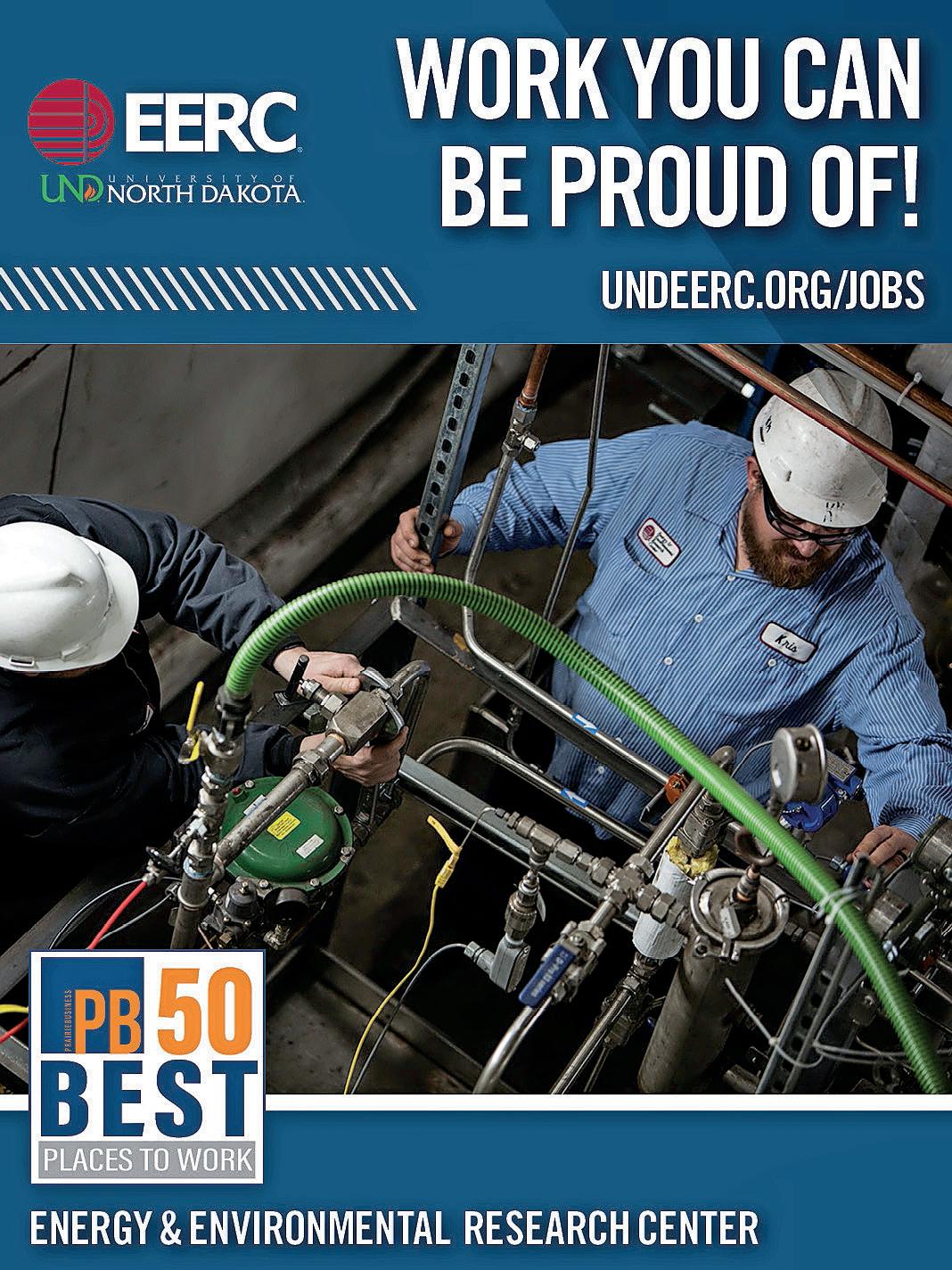



Prairie Business celebrates the region’s top business executives with our annual Leaders & Legacies awards this month. Individuals are recognized for leaving their outstanding marks in business, whether recently as leaders or over their careers, creating a lasting legacy.
Nominations by the public and our staff were carefully considered before the list was narrowed down to eight high-performing professionals who best represent this award. They are known for their strong leadership qualities which include a commitment to excellence, building and strengthening critical partnerships, building community relationships and creating workplace cultures that thrive.
Great leaders are those who leave lasting legacies to build upon. They are fair and supportive, set good examples, are understanding of company and industry needs, communicate effectively and encourage and inspire their teams. They guide, teach, innovate, experiment and are well respected by their peers.
Our 2024 class of Leaders & Legacies award honorees have grown their businesses and improved their industries. Industries benefiting from their leadership include construction, architecture, energy, communications, food processing, accounting and consulting.
They are profiled in this issue and will be honored at a ceremony later this year, along with other Prairie Business award winners – those recognized in Top 25 Women in Business and 40 Under 40.
Also this month we dig into what it takes to recruit a talented and skilled workforce. Although our region has a low unemployment rate, certain jobs continue to be in high demand. We talked to employers, staffing agencies and career academy leaders to learn more about what they do, what they need, how they fill workforce shortages, and what role education plays in future workforce success.
We don’t cover agriculture often in Prairie Business, but it’s important to our region and last month, the FMWF Chamber focused their Midwest Summit event on the topic as part of AgTech week.
Discussion included next-generation agriculture, priorities of the farm bill, and other regional agriculture topics. Dr. William Wilson, a distinguished professor of AES agribusiness and applied economics at NDSU, spoke about megatrends in ag, trade and marketing. An expert panel of commodity leaders shared trends and challenges their industries are seeing. Industry insights were given for carbon capture projects by Bruce Rastetter, founder and executive chairman, Summit Agricultural Group. If you were unable to attend the summit, this article will highlight some of the important issues ag producers are grappling with.
Please join Prairie Business in congratulating all of this year’s Leaders & Legacies award recipients and thank them for their dedication and commitment to continuing to make our region a great place to live and work.
I look forward to hearing from you at cmcdermott@prairiebusinessmagazine.com or 701-780-1276.
PUBLISHER
KORRIE WENZEL
AD DIRECTOR
STACI LORD
EDITOR
CARRIE MCDERMOTT
CIRCULATION MANAGER
BETH BOHLMAN
LAYOUT DESIGN
JAMIE HOLTE
ACCOUNT MANAGER
NICHOLE ERTMAN
800.477.6572 ext. 1162 nertman@prairiebusinessmagazine.com
Prairie Business magazine is published monthly by the Grand Forks Herald and Forum Communications Company with offices at 3535 31st St. S., Suite 205, Grand Forks, ND 58201. Subscriptions are available free of charge. Back issue quantities are limited and subject to availability ($2/copy prepaid). The opinions of writers featured in Prairie Business are their own. Unsolicited manuscripts, photographs, artwork are encouraged but will not be returned without a self-addressed, stamped envelope.
Subscriptions are free prairiebusinessmagazine.com
ADDRESS CORRECTIONS
Prairie Business magazine PO Box 5359, Grand Forks ND 58206-5359
Beth Bohlman: bbohlman@prairiebusinessmagazine.com
ONLINE www.prairiebusinessmagazine.com
2024LEADERS&LEGACIESAWARDWINNER
CharlieGorecki
TheEnergy&EnvironmentalResearchCenter congratulatesourCEOonthisrecognition. Ourmultidisciplinaryteamthriveswith Charlie’svisionaryleadershipandcommitment toinnovationinsustainableenergysolutions.


RANKED NO. 13 PUBLIC UNIVERSITY IN THE MIDWEST BY US


BY CARRIE MCDERMOTT
July is the month we celebrate the annual Leaders & Legacies award recipients. Prairie Business received a number of outstanding nominations for this honor and our staff also submitted nominations for a few individuals.
Career accomplishments and highlights were considered, as well as the positive impact the professionals have made to their organizations, communities and industries. The class of 2024 consists of eight exceptional business leaders in the region who are honored with the Leaders & Legacies award.
This year’s recipients come from the following industries: communications, construction, energy, architecture, commodities, and accounting and consulting.
Prairie Business recognizes top business professionals and exceptional leaders in several other contests during the year, but Leaders & Legacies recognizes only top executives in the region, past and present. Each honoree has established high-level leadership throughout their career, influencing lives and impacting livelihoods. We are thrilled to celebrate and honor this year’s recipients. They are the region’s leaders who are role models for the next generation of leaders.

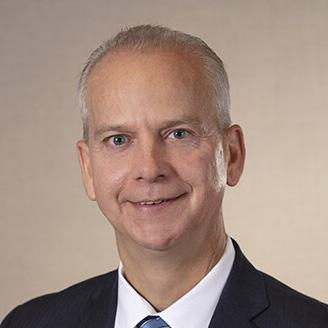
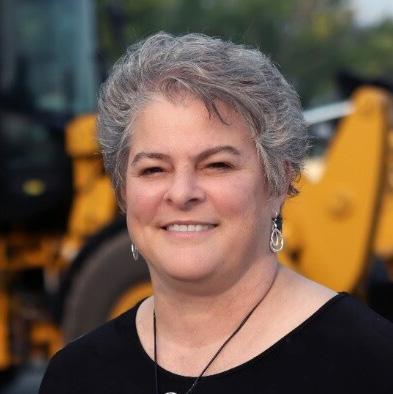





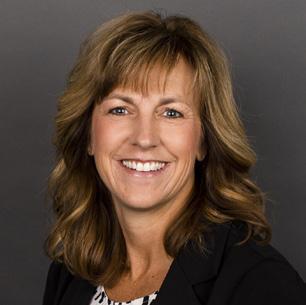






CEO and President
Arvig
Perham, Minn.
Allen Arvig is the president and CEO of Arvig, based in Perham, Minnesota, where he serves as chairman of the Arvig Board of Directors and oversees operations at the executive level.
His career in the telecommunications industry has spanned 70 years, starting in 1954 with his first position as a janitor and toll statement collector at Arvig. Through the decades, he has diligently worked to carry on the legacy of the company his parents founded in 1950 and promote the rural telecommunications industry.
Arvig’s leadership at the executive level and his expertise in the areas of strategic planning and execution have driven the company’s direction. By focusing on acquisitions and partnerships, reinvesting in the network and taking calculated risks on new technology, Arvig has become a premier internet service provider in Minnesota and one of the nation’s largest privately-owned telecommunications providers with more than 900 employees and a 9,000 square-mile service area.
Under his leadership, the company has grown and diversified to include four, wholly-owned affiliate departments: Arvig Answering Solutions, a 24-7 live call answering service; Arvig Construction, a full-service construction division offering fiber to the home, conduit and duct systems, directional boring and underground utility construction; Arvig Media, which provides custom website and graphic design, digital advertising and video production; and All State Communications, which provides communication and data wiring, fire alarms systems, security
and video systems, access control technology, structured cabling and audio-visual systems.
Arvig is a leader committed to the support of the rural telecommunications industry, both in Minnesota and nationally. He has served on the board of directors for Onvoy, the Minnesota Telephone Association (MTA), and the Alliance for Telecommunication Solution Industry (ATIS). He also served as president of OPASTCO (Organization for the Promotion and Advancement of Small Telecommunication Companies) as well as first and second vice president of the organization. In 2000, the MTA presented him with its 21st Century Industry Leadership Award, and in 2003, he was presented with the OPASTCO Chairman’s Award, the highest honor bestowed by the association.
Outside of the company, Arvig has lent his leadership to local efforts that support the development of community housing and job creation, local and regional health-care facilities and other local economic development efforts. In 2010, he was inducted into the Perham Hall of Fame for his numerous contributions at the local level and commitment to giving back to the community.
He contributes to the local Boys and Girls Club and local and regional health care facilities and has served as a member of the Perham Chamber of Commerce, the local Rotary Club, VFW and the American Legion.
Allen and his wife, Carmen, live in Perham. They have five children, all of whom are involved in the company’s operations: David serves as vice president and COO, Dennis Arvig is a programmer analyst in the Enterprise IT Department, Michele Arvig-Biederman is the perception and experience professional in the Marketing Department, Jay Arvig is the company’s fleet director and Ashley Arvig serves as vice president and COO of Arvig Answering Solutions.
CONTINUED ON PAGE 16




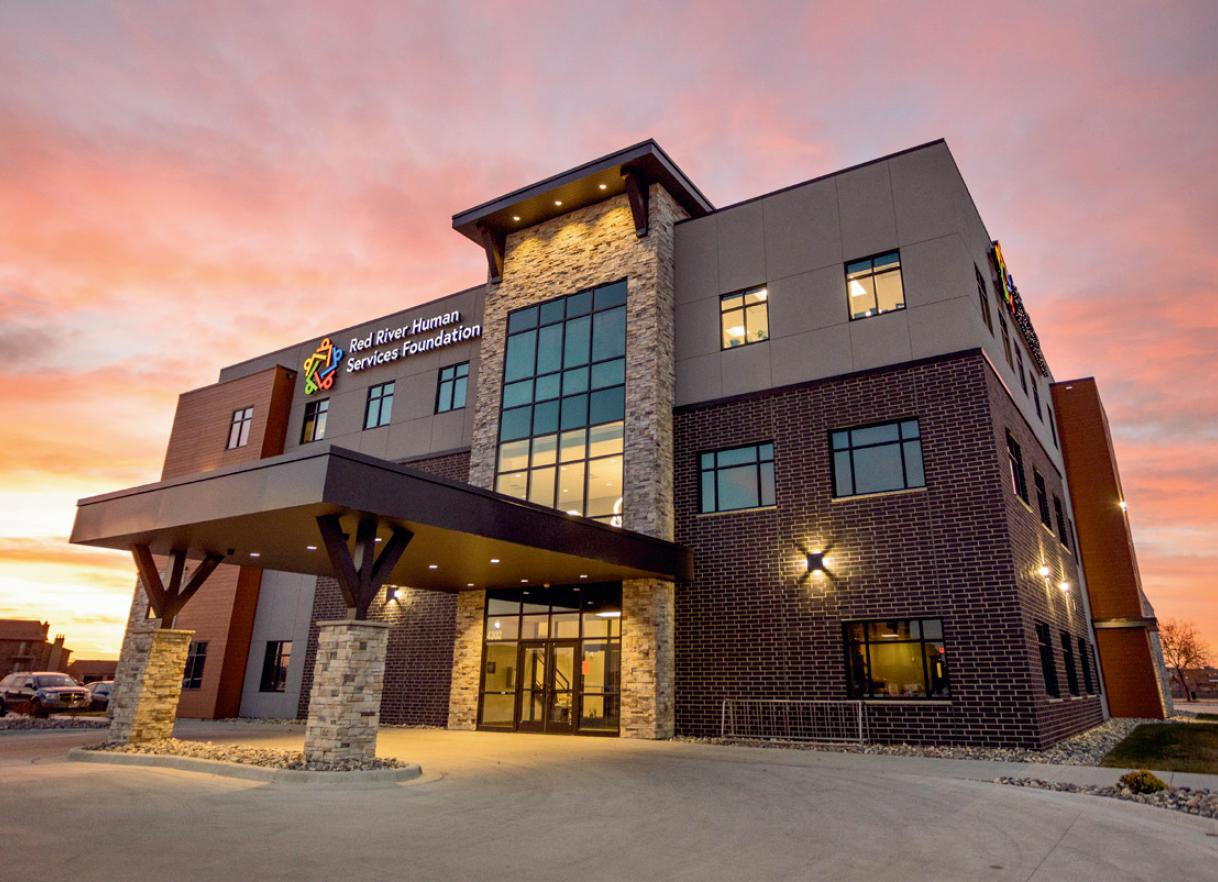


President and Dealer Principal Butler Machinery Co Fargo, N.D
Twylah Blotsky is president and dealer principal for the third-generation and family-owned Butler Machinery Co., a position she’s held since 2019 From accounting to IT, project management to operations management, she has spent more than 30 years with the business.
She believes a person should act today for the job they want tomorrow, which helped prepare her for her career with the family business. Her dedication to her employees and their growth has been evident throughout her career and as president, she continues this by being very involved in the day-today operation and development of leadership at all levels within the business by sharing her experience. Blotsky’s passion for accounting helped to create the business system framework and sound principles the organization still uses today
She is an exceptional leader who values integrity, communication, and care for her team. Blotsky demonstrates compassion and consistently strives to engage with her team and the business as a whole. Her ability to connect with her team on a personal level and lead by example makes her stand out as a leader, according to her colleagues. Blotsky believes in growing others on her team to have the knowledge and decisiveness to lead their critical areas of the business.
Holding various roles throughout her career with Butler, she’s worked with the intent of leaving a strong foundation in each area she served. She was the company’s accounting manager before advancing into the role of controller She went on to be the director of IT, marketing and process improvement where she put her dynamic creativity and project management background to work. She then served as the eastern North Dakota operations manager overseeing the direct sales, parts and ser-
vice operations for six locations, including the largest markets, Fargo and Grand Forks, before becoming president and CEO
Blotsky created and defined the company’s six values – Our Team, Customer Driven, Accountability, Integrity, Excellence and Safety – to support the company’s mission which was created by her father, Matt Butler, decades ago Her father created the mission to help define the purpose of the company that his father created. She went on to instill the values the company has today, defining how to accomplish the mission. This has solidified the team and contributed to the company’s successful growth. Blotsky launched a leadership development program in 2020 after she became president that continues to grow leadership at all levels in Butler
She attends leadership workshops to share knowledge and insights while being able to learn alongside the team. This program consists of three levels – Lead Yourself, The Fundamentals of Butler Leadership and Leadership Experiential Training. Blotsky has embedded a foundation of principles from the book, “Extreme Ownership,” into Butler’s leadership program. She has also launched a culture committee called We Are Butler. This is a team of employees from Butler that she meets with quarterly to discuss how to improve communication, receive feedback, how the company celebrates and creates a great place to have a career, as well as how the team stays involved in the communities we call home.
Blotsky recently retired as a long-standing member on the board of directors for the Theodore Roosevelt Foundation and she is actively serving on the following boards: Ralph Engelstad Arena, UNDAAF, Lignite Energy Council and Pioneer Equipment Dealer Association. She has been an active member of the Northern Lights Boy Scouts of America since 2002, donating her time and energy at various levels.
Blotsky earned her degree in business from the University of North Dakota and achieved her CPA credentials. She also holds a Six Sigma Black Belt which she used to establish efficiency in long-standing processes in the parts and service business.

President and Chief Executive Officer
American Crystal Sugar Co. Fargo, N.D.
Thomas Astrup became the 11th president and CEO of American Crystal Sugar in 2016. The leader of the largest beet sugar producer in the United States has been with the company for 30 years. A native of Fargo, North Dakota, Astrup has held a number of leadership positions with the company including vice president of operations, vice president of finance and chief financial officer, vice president of agriculture and vice president of administration.
He was also chief operating officer of Sidney Sugars, Inc., a wholly-owned subsidiary of American Crystal located in Sidney, Montana.
Astrup graduated in 1991 with a bachelor’s degree in accounting from the University of North Dakota and first worked as a certified public accountant in Minneapolis/St. Paul. He accepted a position at American Crystal Sugar in Fargo-Moorhead in 1994, and during his career has gained a range of experience, not just in accounting and finance, but in nearly every department of the co-op.
Astrup has added value to each position he’s held at American Crystal Sugar Co. and consistently works to improve himself as a leader and manager. Regular meetings with the company’s man-
agement teams throughout the year allow him to review operations at all properties and discuss long-range plans.
He believes in focusing on customers, people and processes rather than profits. Astrup leads the company by establishing goals to accomplish and consistently communicating those to all team members, and by living the company values to achieve those goals. Those values are safety, quality, teamwork, integrity and accountability. Employees are recognized for their accomplishments and celebrated with special team activities.
American Crystal Sugar celebrated its 50-year anniversary in December 2023. The company is one of the nation’s first grower-owned sugarbeet cooperatives that’s thriving under grower leadership which plays a major role in the estimated more than $6 billion in regional economic impact from sugarbeets. Approximately 2,600 sugarbeet farmer-shareholders are part of the cooperative, and received record per-ton payments in 2023, due in part to the higher sugar net selling price of the 2022 crop. The gross payment was about $95 per ton. In 2023, the co-op’s growers saw yields averaging 31.9 tons per acre, higher than the previous record of 30.4 tons in 2016. About 90% of the company’s sugar is sold to the industrial market, where it’s used as an ingredient in other products such as sports drinks, candy and cereal.
Astrup supports industry associations by serving as vice chairman with the Sugar Association Board leadership, as a trustee with the United States Beet Sugar Association, and he is on the National Council of Farmer Cooperatives Executive Council.
Astrup and his wife, Stephanie, are the parents of three children and live in Fargo.

CEO
Energy and Environmental Research Center
Grand Forks, N.D.
Charles Gorecki has been the chief executive officer of the University of North Dakota’s Energy and Environmental Research Center (EERC) since 2019. In this role, he leads a multidisciplinary team of 275 people focusing on research and development of innovative energy and environmental technologies. He oversees strategic initiatives around coal utilization and emissions, carbon management, oil and gas research, alternative fuels and renewable energy, and the energy-water nexus.
EERC has received substantial grant awards during Gorecki’s leadership including $4.2 million to develop hydrogen cell technology, $11.6 million for research related to enhanced oil recovery and carbon capture, and $925 million from the U.S. Dept. of Energy for the Heartland Hydrogen Hub (HH2H) in partnership with Marathon Petroleum, TC Energy and Xcel Energy. The HH2H is a collaborative initiative to produce low-carbon hydrogen, decarbonize regional supply chains, and create clean energy jobs across Minnesota, Montana, North Dakota, South Dakota and Wisconsin. EERC was most recently approved to develop an electric vehicle infrastructure resilience plan, and most recently, in May was awarded $5.1 million for continued carbon capture monitoring and the expansion of opportunities for veterans seeking pilot training.
“Charlie has demonstrated incredible leadership at the EERC. Shortly after taking the role as CEO, he effectively managed us through COVID in a manner that allowed us to significantly grow both in research awards, as well as staff to carry out our mission,” COO Tom Erickson said. “He excels at building critical relationships and is continually focused on better ways to serve our staff, clients, UND, and the State of ND.”
Prior to his current position, Gorecki served as director of subsurface research and development at the EERC, where he focused on conventional, unconventional, and enhanced oil and gas production; geologic storage of CO2; geothermal; the carbon capture, utilization, and storage (CCUS) value chain; and other energy and environmental research. In this role, he served as program manager for the Plains CO2 Reduction (PCOR) Partnership and the Bakken Production Optimization Program, two major collaborative industry-government programs.
Gorecki joined the EERC in 2007 and holds a master’s degree in petroleum engineering and a Bachelor of Science degree in geological engineering from UND. He has authored and co-authored numerous papers and given presentations on a variety of topics in the United States and throughout the world.
Gorecki served in the Minnesota and North Dakota Army National Guard for nine years. He’s a veteran of Operation Iraqi Freedom and deployed to Iraq with the 141st Engineer Battalion’s Company B out of Jamestown, North Dakota.
He and his wife, Jess, have two children, Evan and Stella, and two golden doodles, Sammy and Teddy. They reside in Grand Forks.
CONTINUED ON PAGE 20






Allen Arvig CEO/ President






President and CEO
MDU Resources Group, Inc.
Bismarck, N.D.
Nicole Kivisto has made company history twice in a male-dominated industry. She is the first woman at MDU Resources Group, Inc. to hold the role of president and CEO, based in Bismarck, North Dakota. She advanced to the position in January 2024 after working for the company for 29 years. Kivisto is also on the short list of women CEOs of Fortune 1,000 companies.
Before her current role, Kivisto served as president and CEO of the corporation’s utility group, including four subsidiaries serving 1.2 million electric and natural gas customers in eight states, another first for the company. Prior to that role, she served as vice president of operations for two of the utility subsidiaries, as well as vice president, controller, and chief accounting officer for MDU Resources for nearly four years. She joined the corporation in 1995. MDU Resources celebrates its centennial anniversary this year.
Dave L. Goodwin, immediate past president and CEO at MDU Resources Group, said one of the “quickly apparent personality traits Nicole possesses is her genuineness. She is sincere and caring, as well.”
She demonstrates unwavering integrity, and is unassuming, empathetic, and energetic, her colleagues said. Kivisto is fo-
cused on big-picture initiatives but loves getting into the details, and is considered a grounded and gifted communicator by those she works with.
“I had the privilege to be a mentee under Nicole 10 years ago in the company’s formal mentoring program. One of the biggest takeaways that I still use today from that year of mentoring is that happiness is a choice, and Nicole is always doing what she can to be happy and to ensure all her employees are happy. She leads by example and truly cares about others. Nicole asks questions until she understands and is comfortable, she is making the right decision,” said Tammy Nygard, controller, MDU Utilities Group.
Kivisto has been directly involved in the major decisions leading to the company’s expansive growth during her time with MDU Resources. Ultimately, the company has expanded to have operations in more than 40 states. She has played an essential role in MDU Resources’ growth, transformation, and transition during her almost 30 years at the company.
She’s a current board of directors member of the American Gas Association, Edison Electric Institute and Bravera Bank. She’s previously been on the board of the Lignite Energy Council, where she served as chair, the North Central Electric Association and the University of Mary.
Kvisito holds a bachelor’s degree in accounting from the University of Minnesota-Moorhead, is a graduate of the Carlson School of Management Minnesota Executive Program and the Utility Executive course from the University of Idaho.
She has been married to her husband, Matt, for 29 years.

Chief Executive Officer and Shareholder
Brady Martz & Associates
Minot, N.D.
In his more than 30-year career with accounting and consulting firm Brady Martz & Associates, Todd Van Dusen has been an outstanding service provider who has been incredibly impactful to the firm and its team members in his various leadership roles. He is one of 54 shareholders and currently serves as the company’s CEO. “He leads with a stewardship mindset and sets the same expectation for his fellow leaders,” one nominator wrote.
“Todd cares about our team members, clients, and community and demonstrates this through his actions. When he took over as CEO, he had a vision to leave our firm better off than when he came in, and he has!” one nominator wrote.
Over his nine years as CEO, Brady Martz & Associates has tripled in size and now has more than 400 team members spread across nine markets. Increased firm size equates to increased impact both for clients and communities. He is a highly sought-after leader in the profession who is asked to serve on multiple advisory groups for various affiliations of the firm. He is recognized as an impactful leader and is often asked to share the firm’s journey and his experiences in leading it.
“Stewardship is a core value within Brady Martz & Associates that has been encouraged and blossomed under Todd’s leadership. Encouraging our entire firm to be good stewards not only for our clients and team, but also our community, has created a culture that continues to give back. Under Todd’s leadership, a day of giving for all local offices and
communities is just one way to give back by encouraging the team to give their time and talents,” a nominator wrote.
Van Dusen has recognized the need to drive significant changes in the firm in response to the transformational changes happening in the profession. He has taken continuous steadfast action to drive that change. Under his guidance, the firm has undergone governance and operational changes, made investments in advisory service offerings, and added multiple markets to the company’s physical footprint. In a profession known for long hours and compressed tax seasons, he has promoted an environment of flexibility and well-being by instituting policies such as flexible work arrangements, flexible time off, and various leave benefits.
“Under his leadership, Brady Martz has elevated its impact on the communities where we live and work,” another nominator wrote. Adopting the tagline “Make Every Day Count” has a broader intent than client service culture. It’s also about how the firm wants to impact our communities and make a difference. Todd has strengthened the firm’s culture of giving back by adding the expectation that each market completes a large community impact project annually in their market. That impact project includes a financial contribution as well as a contribution of time and talent as team members volunteer together to support the chosen cause.
Prior to his role as CEO, Van Dusen served as the Minot, North Dakota market leader and served as a member of the company’s board of directors.
Van Dusen will be stepping down as CEO of Brady Martz on Sept. 30, 2024. The legacy he leaves behind and the firm he has transformed it to be will remain stronger than ever.
Van Dusen and his wife, Heidi, have two children, Brandon and Keston.

AIA ALEP, LEED AP
Principal Architect and K12 Practice Studio Leader
JLG Architects
Alexandria, Minn.
Dan Miller, AIA ALEP, LEED AP, is the principal architect and K12 practice studio leader at JLG Architects in Alexandria, Minnesota. He has dedicated 29 years to shaping cutting-edge learning environments, future leadership, career advancement, and vibrant, well-connected communities. He takes pride in a legacy of lifelong learning, which has forged innovative new pathways in education, environmental stewardship, community partnerships and workforce resilience across the Midwest.
Miller is the board chairman at JLG and is one of the firm’s original majority owners. His leadership has played a pivotal role in guiding JLG’s 2014 transition to 100% employee ownership, creating an extraordinary legacy firm and progressive culture for equitable opportunity, internal and collegiate mentorship, organizational leadership, community relationship-building, volunteerism, pro bono work and sustainable practices. He has been instrumental in the firm’s growth from just a handful of majority owners to over 200 employee-owners across three states and leading the geographic expansion to nine total offices, including spearheading the firm’s 2004 opening in Alexandria, Minnesota.
Miller “understands the weight of his responsibility to school districts and the overwhelming challenges they face, leading with a thoughtful and future-driven vision for education that aligns the complex and evolving needs of students, teachers, administrators, community, and regional industry,” one nominator wrote. His lifelong love of learning, listening, and envisioning new pathways has fueled an extraordinary career, producing award-winning educational environments that ignite a more passionate next generation of learners and leaders.
A longtime AIA (American Institute of Architects) member and NCARB-certified architect registered in Minnesota, South Dakota, and North Dakota, he’s also a LEED-accredited professional with certification from the U.S. Green Building Council. He has earned over 30 industry awards while contributing his expertise to another 70 firm and client design awards. Miller has received certification as an active shooter responder
instructor and is an accredited learning environment planner (ALEP) through the Association for Learning Environments (A4LE) – the only professional organization whose principal purpose is improving the places where children learn. One of only eight ALEP architects in Minnesota, his certification signifies the highest qualification and competence in the educational facility planner profession.
Raised on a family farm near Redfield, South Dakota, Miller understands that the most successful projects reflect the vision and values of the community, striving to ensure community members are engaged in ideas and every voice is heard. He “leads charrette workshops, supports districts at pre-referendum open houses, gathers input from dotmocracy sessions, and guides oversight meetings, understanding that often the best ideas don’t come from the design team, but rather the voices of the community,” the nominator wrote.
Miller’s impact reaches far and wide. He creates opportunities for future-forward education, career enrichment, and ongoing encouragement that prompts others to explore the depth of their talents and interests. A leader who brings the principles of what is happening in learning environments back to the office, he encourages a collaborative environment where creativity and critical thinking thrive.
He graduated from NDSU with a Bachelor of Architecture in 1994, where he was recognized as a finalist for the Peter F. McKenzie Memorial Award – Outstanding Thesis, First Place in the Masonry Design Competition (1992), a finalist in Awakening Responsibility for the AIA Colorado Design Competition (1993), and a Merit Award from the Fargo Heritage Society Design Competition for his work on the Great Northern Depot Restoration (1993). Early in his career, Miller garnered professional recognition as the 2003 Young Architect of the Year by the North Dakota Chapter of the American Institute of Architects, and in 2009, he was named to Prairie Business Magazine’s “20 Under 40.”
As a father of five, Miller strives to go beyond architectural planning and design – he listens, learns, and whole-heartedly prioritizes the needs of students and administrators, taking responsibility for elevating the role of schools, accelerating student success, creating beneficial school and community partnerships, and bolstering regional workforce. He is also an active community volunteer, serving the Alexandria Area YMCA Facilities Committee, along with the Alexandria Covenant Church in various leadership roles, including Sunday School and Men’s Ministry.

CEO and Principal TSP, Inc.
Sioux Falls, S.D.
Jared Nesje is the chief executive officer and principal of the multidisciplinary architecture, engineering, planning, and interior design firm of TSP, Inc. in Sioux Falls, South Dakota. The fifth CEO to lead the company, he’s the first architect in the position since Harold T. Spitznagel founded the company in 1930. Nesje is also the president of TSP’s board of directors.
As the company’s leader, Nesje guides business development, client relationships and practice across the firm’s Midwest footprint. In addition to Sioux Falls, TSP, Inc., has offices in Rapid City and Watertown, South Dakota, and Rochester, Minnesota. Before becoming CEO in 2015, Nesje was a project manager and architectural discipline lead for TSP. He guides the organization with a “humble tenacity that respects the firm’s 94-year legacy while constantly seeking areas for improvement,” one nominator wrote.
From an early age, Nesje knew he wanted to be an architect. During high school, he worked at a design firm as a “blueprint gofer,” where he learned that architecture encompassed more than he’d imagined. He also knew he wanted to stay in his hometown of Sioux Falls, and realized the value of being part of something bigger than himself takes a whole team to pull together.
Nesje has long been known as a team member who genuinely cares about others. He’s built a reputation as someone all team members can approach, prioritizing the needs of others. His level of caring continues in his role as CEO, where he engages and encourages all employees to provide ongoing feedback and ideas for improvement.
Company culture under his leadership deserves recognition, as he emphasizes daily the importance of each team member and the intentional nature of the firm’s hiring process. Under Nesje’s leadership, TSP transitioned from a traditional ownership model to employee ownership through
an employee stock ownership plan (ESOP). This milestone achievement reflects a strong culture and a deep belief in that culture. He guides the team by daily living out the firm’s core values of “we before me,” “design it like we own it,” and “committed to our craft.”
In 2018, Nesje instituted an annual in-person meeting across the company footprint. This fun, team-building event builds engagement and is designed to help team members feel valued. Of particular benefit, a face-to-face gathering in a relaxed environment helps build strong relationships between team members who work in different office locations, but often collaborate on projects.
Nesje was instrumental in launching a firm-wide initiative at TSP called “Back to Basics.” This program gives all TSP team members, regardless of their job title, the opportunity to visit project sites throughout various stages of construction and learn from the uniqueness of each project. The effort takes place across the entire company footprint. After each site visit, the team returns to their respective office for social time to discuss what they experienced, what they might have learned, and how they can improve. Back to Basics emphasizes the value of mentoring and supports the concept behind “committed to our craft,” one of TSP’s core values. It has resulted in TSP team members who are more cohesive, collaborative, and better communicators, one nominator shared.
In Sioux Falls and the region, Nesje is dedicated to the next generation through his service on the Southeast Technical College Housing Foundation Board of Directors and the South Dakota State University School of Design Director’s Art & Design Council. His other community and civic involvements include volunteer service with the Sioux Empire United Way, Boys & Girls Clubs of the Sioux Empire, and the Rotary Club of Downtown Sioux Falls.
He earned a bachelor’s degree in architecture and environmental design from North Dakota State University. He is a registered architect in South Dakota, Iowa, Minnesota, and Nebraska.
Nesje is married to wife, LaDawn, and the couple has two sons, Jonah and Jack.

BY CARRIE MCDERMOTT
Although North Dakota boasts a low 2% unemployment rate, better than the national average of 4%, industries in the region continue to be dogged by workforce shortages. At WCCO Belting in Wahpeton, the hardest positions to fill are the technical ones, such as engineers. And if a company wants an engineer with 10 or 15 years of experience, good luck.
“They are like unicorns – just impossible,” WCCO Plant Manager Rodney Koch said.

Koch said Wahpeton has less than 1% of qualified candidates for those spots, which makes it “beyond competitive” in the southeast corner of North Dakota.
“We’re all looking for the same people. This is a very industrious town. We train, we have over 90 internal courses, we partner with local colleges, but it’s incredibly difficult,” he said.
MANUFACTURER WCCO BELTING IN WAHPETON, N.D., HAS JOB RECRUITING SUCCESS FROM INTERNAL REFERRALS. PLANT MANAGER RODNEY KOCH CREDITS THE HIGH PLACEMENT RATE TO THE COMPANY CULTURE OF TREATING EMPLOYEES LIKE FAMILY. / COURTESY WCCO BELTING
Now that the commercial belting plant is part of ContiTech, a division of supplier and technology company Continental, workforce recruiting happens not just locally or regionally, but globally. But the best way Koch has found to attract top talent is word of mouth.
“We still put ads in the local paper, do career fairs, all the traditional things. But what we’ve found works best, the secret sauce so to speak, is our internal employees. We have them do our own recruiting,” he said. “We have a very unique work culture here where we treat everyone like family. If people truly know you care about them and they feel safe there, they’ll recruit their family and friends and neighbors. I think we’re at 92% of our new hires are from internal referrals.”
Recruiting strategies differ depending on the industry and company. The pandemic showed that flexibility is important to employees and investments in technology have allowed more positions to become hybrid or remote. Health care, retirement, time off and child/dependent care benefits are sought by job seekers. A healthy and respectful workplace culture is touted by many employers as part of their recruitment process.
Accounting and CPA firm Eide Bailly has a culture of “One Connected Firm,” which allows employees across the company’s nationwide footprint to share resources and career opportunities.
“We foster this culture by very intentionally creating opportunities to collaborate on jobs, learn together through training and holding firmwide meetings. We continually review our benefit offerings to meet the needs of our existing team members while being attractive to those we recruit,” said Chief Human Resources Officer Lisa Fitzgerald.
Depending on the needs of the department and clients, hybrid or remote working arrangements are available, she said.
The firm offers competitive benefits packages with a lifestyle spending account that employees can use toward virtually anything to improve their overall well-being. Other benefits include the Calm app for every employee and their family members, a robust employee assistance program and wellness challenges and resources through Wellable.
Although the nation’s construction industry has a labor surplus, according to the U.S. Chamber of Commerce, not all open positions are easily filled. Certain geographic locations may not have enough workers.
Mandi Spindler, talent director at Ulteig in Minneapolis, said the infrastructure engineering and consulting company has an excellent retention rate, which surpasses industry benchmarks.
“We are constantly re-evaluating employee needs, development opportunities and culture initiatives. This ensures everyone has the resources needed to perform at their best and keeps us attuned to opportunities necessary for talent retention and development,” she said. “However, Ulteig is faced with an industry-wide engineering talent gap. Simply put, there are fewer qualified candidates available than there are open positions, creating a competitive hiring landscape for these roles. At the same time, Ulteig is growing rapidly, creating more demand for engineering roles.”
To face that challenge, the company’s HR team gets creative and intentional in how they fill positions in a competitive market where job seekers have the advantage. Senior engineering jobs that require a combination of technical, leadership and client development skills are the most difficult to fill.
“Finding creative ways to fill our talent pipeline is a constant focus. We believe strong collaborations are key to our success,” Fitzgerald said. “One of our biggest strengths is our internship program. It’s a win-win: interns gain valuable real-world experience, and we get to know promising young talent early on.”
Many times, an intern goes on to become a fulltime employee, making integration into existing teams seamless.
General building contractor JE Dunn Construction has been focusing its hiring efforts on field supervision, traditionally the hardest role to fill. The company has 26 offices in 18 states with hundreds of project sites across the country.
“The National Center for Construction Education and Research (NCCER) recently noted that we are not only in a high-demand and low-supply market for field supervision, but the problem is forecast to worsen as more workers hit retirement age. We are proactively working to build our current and future workforce by creating a culture that promotes longevity to offset this challenge,” Talent Acquisition Manager Rosemary Adams said.
For skilled positions, the company is focusing on recruitment for carpentry. It also uses employee referrals, a “massive driver” in their hiring success.
“Unfortunately, we have more personnel exiting the trade industry than entering, and it is forecast to continue to rise into 2025,” she said. “We are working to build more awareness of career opportunities within skilled trades at a K-12 learning level. The strategy is to encourage more students to explore trades as a career pathway.”
By law, every school district in North Dakota must provide at least one CTE program to their students. Not only do the high schools provide career and technical education courses, but the state also has career and technology centers (CTC) that provide that education in more rural areas.
“They have been in the state since the 1970s and have been growing ever since. Recent funding from our Legislature has exploded the initiative but they’re not new,” said Wayde Sick, director and executive officer of North Dakota’s Career and Technical Education department.
The intent of the CTE programs is to provide more career exploration and foundational programming to students, as well as variety, so they have an awareness of the industries and occupations in their communities that they otherwise may not know about. The value to employers is that they provide the instruction, materials and equipment and have that open door to find a future pipeline for their workforce, Sick explained.
Each program has an industry advisory committee that must meet at least twice a year, which allows the employers to review the curriculum, inspect the equipment and make sure what’s being taught is aligned to industry needs.





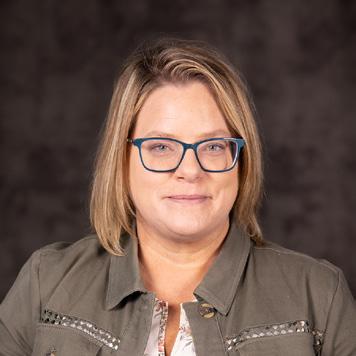


“The other part of how they connect is those work-based learning experiences. We’ve told the programs, the directors, the instructors around the state, when you’re trying to place students in the community, the people you should be going to first are those industries on your advisory committees because they have an awareness of your program. They know what you’re doing and what to expect. They should be the ones to take those students under their wing and help them grow in their careers,” he said.
CTE has created a toolkit of age-appropriate career exploration experiences targeting elementary, middle and high school students, as well as post-secondary.
“If the goal of high school is to get students on a career path, then the earlier we do that, the better. We need to let them know the opportunities that are out there and give them the information and resources to make an informed decision that meets their interests and their talents,” Sick said.
Leaders at Bobcat Company understand strong partnerships are necessary to support the next generation of professionals and have created cooperatives and internship programs across many of its business functions. Eric Rasmusson, Bobcat talent acquisition operations manager, said the company is investing in the future.
“Bobcat is committed to investing in and developing talent that will shape the next century of innovation. Within the last year, we’ve made a $5 million donation to the North Dakota State University Foundation in support of its engineering program to build a new Center for Engineering and Computational Sciences. We also made a $250,000 donation to the University of Mary’s Hamm School of Engineering,” he said.
The company also offers annual scholarships, Doosan Discovery Grants for STEM initiatives and education, and participates in the North Dakota Workforce Innovation Grant to promote awareness and attract talent to manufacturing. Recruitment is also done with traditionally overlooked talent pools such as minority, veteran or women-owned agencies.
“We are committed to finding and retaining the best workforce talent possible for all our locations across North America,” he said.
Whether a business requires temporary, tempto-hire, direct hire, on-premise staff management or outsourced talent, staffing and talent recruitment agencies are a great resource.
Karen Witzel, Spherion franchise owner in Fargo, Bismarck and Sioux Falls and vice president of sales and marketing, works with small and medium-sized businesses to match qualified talent to her clients’ openings. She likens the firm’s services as an extension of a company’s human resources department.
“Our job is to juggle the candidates, whether active or passive looking, or confidentially seeking.
We’re not (North Dakota) Job Service but have to make decisions to get our customers’ positions filled. Our customers pay us a premium, we need to find them the best candidate,” she said.
In addition to finding employees, the staffing service provides local salary data for the market twice a year, to allow employers the ability to compare their compensation against their market.
Jacob Johnson, business development manager at Doherty Staffing Solutions in Grand Forks, said staffing agencies can be timesavers for employers.
“Recruiting takes so much time to get through – not just recruiting but interviewing, processing candidates, and just reading resumes can take hours. We try to take that off their plate and make sure we’re presenting, instead of all 100 candidates, the best five candidates,” Johnson said.
The bread-and-butter industries that Doherty mainly serves are light industrial, manufacturing, warehousing and distribution, but has branched out to include more technical areas such as engineering, science, research and development, human resources and clerical positions. A separate division of Doherty called Career Solutions handles recruitment of corporate-level positions.
Four years after the pandemic, Johnson said he’s seen a shift in what companies are looking for. Instead of needing 200 workers for this year’s plan, for example, they’re interested in having a contingent workforce on top of their regular workforce in case of expansion.
For example, a manufacturer is doing a capital investment project and wants to increase its output for six months. The staffing agency will work with them to determine the number of people they need to complete the project in addition to having the option to increase or decrease the number of people on assignment at any given time.

MSUM CONNECTS STUDENTS WITH BUSINESSES OFFERING INTERNSHIPS AND PART-TIME EMPLOYMENT.
“This month we expect to need 110 people on the floor, next month we’re going to need 120, but the month after we’re only going to need 100. They can wiggle that number easier if they have contract staff than they could if all the staff were permanent, because then you get into layoffs and people have uncertainty about the job. That’s one place we’ve seen companies get some advantages in dealing with uncertainty in the economy or uncertainty in their industry,” Johnson said.
Higher education is part of the recruitment formula. It creates a pipeline of workers by not only providing educated talent specializing in specific skills, but offers student-friendly opportunities, including internships and part-time employment, for industries seeking more than traditional full-time employees.
Samantha Gust, director of the Career Development Center at Minnesota State University Moorhead, said the university system works diligently to connect students to employers and industry. Employers are invited into the university for classroom visits, career fairs and on-campus interviews.
“Employers can post and recruit students using Handshake, a job and event posting platform for university students and graduates with 0-5 years of professional experience,” she said.
Programs at MSUM are developing innovative ways to help students engage in work-based learning by using employer partners.
“For instance, Dr. Adam Stocker from the MSUM Biosciences Department has launched the SPARQ Competition that gets students to develop solutions to challenging scientific questions provided by industry partners like (bioscience firm) Aldevron,” Gust said.
Higher education institutions are offering new or expanded programs, degrees and certifications to meet industry demands, such as cybersecurity, school psychology, social work and criminal justice.
“All of the opportunities are mutually beneficial, providing skilled talent to employers and engaging learning opportunities and network development for students,” Gust said.



KRISTA SWANSON, LEAD ECONOMIST WITH THE NATIONAL CORN GROWERS ASSOCIATION, THIRD FROM LEFT, TALKS ABOUT SUPPLY AND DEMAND PRICING DURING A PANEL DISCUSSION AT THE MIDWEST AG SUMMIT ON TUESDAY, JUNE 11, 2024. SHE WAS JOINED BY AMERICAN SOYBEAN ASSOCIATION PRESIDENT JOSH GACKLE, SECOND FROM LEFT, AND NEIL ROCKSTAD, PRESIDENT OF THE AMERICAN SUGARBEET GROWERS ASSOCIATION. THE PANEL WAS MODERATED BY BOBBY NESS OF BREMER BANK, FAR LEFT, IN THIS IMAGE FROM THE EVENT’S LIVESTREAM. CARRIE MCDERMOTT
CARRIE MCDERMOTT
Technology in the agriculture industry continues to improve everything from the quality of seed to the ways in which crops are managed in the field. During the Midwest Ag Summit in West Fargo held in June, experts in the ag industry spoke about how the adoption of technology is necessary for the U.S. to remain a leader in agriculture commodities.
Corn and soybean acres have increased in the upper Midwest states, including North Dakota, South Dakota and Minnesota, since 1995. Dr. William Wilson, a professor at North Dakota State University, said the U.S. used to be the largest producer and exporter of just about everything, but countries like Russia, Ukraine and some South American nations are narrowing that lead. Global conflicts and climate change are impacting agriculture in the U.S. and around the world, creating additional challenges for ag producers.
“Carbon markets are now an important source of income for farmers. There are a large number of states and countries requiring carbon-type initiatives to reduce carbon. Ultimately, that affects growers because people who want to reduce their carbon programs will pay different contracting companies to pay growers to take on initiatives in production to reduce carbon,” Wilson said. “That’s a pretty important feature of agriculture today and certainly in the future.”
Renewable diesel is a quickly growing industry. Most of that industry requires vegetable oil, such as soybean oil, which ultimately requires 8-10 million acres of soybeans if the industry doesn’t rely on imports of the commodities, Wilson said. It has a big impact on soybean oil and crushing markets.
“We produce about seven million acres (of soybeans) in this state, which means we need three additional states the size of North Dakota to support that industry,” Wilson said. “That’s the challenge.”
This is where technology can help farmers who need to do more with less. Wilson said research has shown that the return on investment is beneficial for ag technology because it involves more precision, lower costs and fewer errors.
A panel of producers discussing commodities talked about farm bill delays and how global conflicts affect the supply chain. The lack of a new farm and nutrition bill is causing uncertainty and having to operate under 2018 numbers does not reflect what’s needed today, the panel agreed. At a massive $1.5 trillion, draft legislationby U.S. House Agriculture Chair Glenn “G.T.” Thompson, R-Pennsylvania, significantly boosts farm safety net and nutrition programs that serve as the basis of the U.S. food and agriculture sector as well as rural communities. It’s one of
the few must-pass bills left for Congress to address this year.
Josh Gackle, president of the American Soybean Association, said farmers are trying to create less uncertainty when planning their budgets, and the year-to-year farm bill is creating more uncertainty.
“One of the big struggles for the House and Senate to agree on a bill now isn’t just the cost of the bill and where you are going to shift dollars. If you’re working on building a farm bill in 2025, rather than 2024, you’re talking $1.5 trillion. It just gets more expensive and harder to get done,” Gackle said.
Producers are starting to see a trend of depressed commodity markets and Neil Rockstad, president of the American Sugarbeet Growers Association, said when there’s uncertainty in the future, farmers are going to be more conservative.
“Farmers are going to naturally tighten their belts, and that’s a quick spillover into the local and regional economies,” Rockstad said. “We can manage the risk, so I think the legislation providing a bit more certainty and enhancing the risk management tools is going to be the key toward weathering the storms of the highs and lows of the commodity markets.”
The outlook for 2024 for corn and a number of other commodities is that the costs of production, on average, are higher than the expected price and farmers are looking at a situation this year where profitability may be difficult. Prices are set by supply and demand.
“If the market is dictating price at a certain point and it’s below our cost of production, then we’re subject to that. That’s one of the challenges farmers face and why the safety net was created back in the 1930s initially,” said Kristi Swanson, lead economist for the National Corn Growers Association. “Our priorities surround strengthening that farm safety net and making it more responsive in this environment we’re in right now.”
Gackle encouraged attendees to contact their legislators and tell them what’s needed in the farm bill. To make farming more affordable and attractive to young farmers, who expect to be more leveraged and need to borrow money, it’s important to offer lower interest rate loans, Rockstad said.
Zach Duchaneaux, USDA, Farm Service Agency, expects to see the farm bill passed and enacted for the next five years. He
shared information about FSA services and loan programs, noting the agency makes loans to the producer, which results in a negative cost to the taxpayer.
“That’s a fantastic opportunity for us to engage in rebuilding rural America, preserve it for the next generation to stay on the farm. There are more opportunities for producers, and global benefits to help stem the effects of climate change,” he said.
“We have offered thoughtful suggestions to enhance what we’re doing to better meet our goals. If producers don’t have the finances to allow them to have some money left at the end of the year, they won’t be able to take advantage of the opportunities,” Duchaneaux said.
On the technology front, ag producers have choices and preferences as to how deep they want to invest in technology for their operations. Depending on whether a farmer is an early or late adopter, options include integrating technology such as autosteer on tractors, data collection tools that help producers be more effective and sustainable users of products, and the advanced technology of autonomy.
“Let’s be honest – the most important piece of technology we have on the farm
today comes in the seed bag that we put in the planter in the spring of the year. Tech 2.0 is the convenience of autosteer, the variable rate mapping,” Rockstad said. “How can technology work on my farm?
It has to have value for us and has to have a return on investment. There are a lot of technologies out there that provide very nice conveniences I would love to have, but without a return, we’re not going to use those technologies.”
The question of data gathering and data ownership was addressed, including the legislative challenges both domestically and internationally. Data collection companies wanting to work with producers need to ensure value is being built.
“I think the challenges there are, how is it protected, what are the stewardship guidelines so that farmers investing in that product and the work they’re doing in their operations to create what everybody agrees is really valuable. How do you find that balance to benefit both the farmer who is collecting, producing and maintaining it and the company that’s providing the tools?” Gackle said.
The event was part of AgTech Week in Fargo, held June 11.

GRAND FORKS, N.D. • Engineering News-Record (ENR) recently announced JLG Architects as the 2024 ENR Mountain States Design Firm of the Year, an award that coincides with a top 10 ranking on ENR’s list of Top Design Firms (Colorado, Wyoming, Dakotas).
This is the second time JLG Architects has been recognized as ENR’s Design Firm of the Year. The firm was first recognized in 2019 for completing a decade-long shift from a generalist business strategy to employee-ownership led by five specialized practice studios, including higher education, K12, healthcare, sport, and community.
ENR’s 2024 recognition was based on the firm’s recent projects and a reported $52.01 million in regional revenue for 2023. This revenue marks a nearly 20% increase over the previous year, just shy of doubling the level posted when the firm first received recognition in 2019. In this time span, JLG has also nearly doubled its workforce, expanding from 120 Midwest-based employee-owners to over 200 nationwide.
“Few could have predicted the upheaval that would soon follow as the pandemic affected lives, communities and the economy. Yet JLG managed not only to weather those challenges but also quickly return to growth,” as reported by ENR journalist, Jim Parsons said of the time since JLG last won the award.
As JLG’s CEO, Michelle Mongeon Allen told ENR, “The key to mitigating the pandemic’s effects was staying close to clients and focusing on being a well-run business. Rather than risk losing people as revenue slowed, JLG redeployed staff to functions such as business development, advancing and formalizing integrated design methodologies, and building out platforms for project processes and customer relations. As a result of this investment, we were very well-positioned as projects came off hold and pent-up demand surged, including success in landing some of the region’s most important and impactful projects.”
In choosing JLG as Design Firm of the Year, ENR noted several of the firm’s recently completed and upcoming projects, including Augustana University’s $72 million Midco Arena, a 25-year master plan for Altru Health Systems in Grand Forks, North Dakota, and the upcoming Moorhead Community Center & Public Library.
“The Moorhead Community Center & Public Library will reactivate the core of the community, bringing an ‘All Under One Roof’ 70,000-square-foot epicenter that weaves together library pro-
gramming, a second-story walking loop, indoor and outdoor play, community gathering spaces, and educational opportunities for enrichment,” said JLG’s Rob Remark, AIA, Principal Architect.
As ENR reported, Kristie Leshovsky, Moorhead’s community development director, praised the JLG and Miller Hull partnership for “ensuring all voices were heard for ‘the once-in-a-lifetime project.”

“We looked at their proposal and said, ‘Yeah, that’s it!’ Understanding the different aspects of what the community wants and being able to put the best uses together will result in a really great building.”
“We really wanted to make this building for the community, by the community,” Leshovsky stated to ENR. “They’ve done a great job of working with all of the groups who we felt had to be involved in the process.”
In Medora, ND, JLG is the Architect-of-Record for the Theodore Roosevelt Presidential Library (TRPL) – designed to be a “living library” that continues Roosevelt’s passion for conservation. Scheduled to open its doors in 2026, the Library will embrace the sweeping contours of the Badlands, honor ecological systems, and serve as a global model for sustainable living. JLG is working alongside the international design Architect and Design Landscape Architect Snøhetta, Landscape Architect-of-Record Confluence, and Construction Manager JE Dunn. TRPL is pursuing several sustainability firsts, with a goal of achieving three concurrent certifications at the highest level – LBC, LEED Platinum, and SITES Platinum.
“TRPL seeks to establish the next century of conservation by focusing on circularity and carbon-positive action that gives back, resulting in making more than is consumed,” said JLG’s Patrick Thibaudeau, Principal Sustainability Officer, LEED Fellow, LFA. “TRPL seeks to be a living library that embraces the Badlands, honors ecological systems, and provides a model for sustainable living. We’re not just building a presidential library. We’re building an idea that has a powerful and transformative impact on the way we work, learn, and live.”
Also in western North Dakota, JLG is leading a $37-million medical training facility at Williston State College that will begin construction in 2025, along with the design of Heart River Women’s Transformation Center in Mandan, ND. Nearing the end of schematic design phase, the new minimum-security facility will support the North Dakota Department of Corrections and Rehabilitation’s efforts to address systemwide challenges residents face as they progress from incarceration into the community.
As reported by ENR, Colby Braun, NDDCR’s director, said “JLG has captured the agency’s concept of a facility fully focused on healing, change and rehabilitation. They’re able to understand problems of people living and working in the unit and design in a pretty specific way. The way they’ve put it into place is more than I expected.”
Just 20 miles west of North Dakota’s largest city, JLG is collaborating with Emerging Prairie on the design of its Grand Farm Innovation Campus in Casselton, ND – work aimed at developing autonomous technologies for the benefit of regional and global agriculture.
JLG is additionally leading the design of the Fargo Parks Sports Center at the Sanford Sports Complex in Fargo, ND. The grand opening event on May 29, 2024, marked the completion of the first phase, totaling approximately 290,000 square feet, designed by JLG Architects with McGough Construction.
The Fargo Parks Sports Center is currently home to four multi-sport courts, a championship court, a 95,000-square-foot indoor turf field, an elevated 350-meter three-lane walking track, and 25,000 square feet dedicated to Sanford Sports, including Sanford Sports Performance, Sanford Sports Physical Therapy, and Sanford Sports Academy. The Sports Center also designates space for a Midco-sponsored lounge and Fargo Park District staff offices. At the completion of phase two, the facility will open nearly 400,000 square feet, positioned as a multi-purpose community recreation facility that accommodates a wide variety of indoor sports, activities, tournaments, ice hockey, and special events.
“The impact of the facility will be great and will go far beyond sports and recreation,” said Fargo Park District’s Executive Director, Susan Faus. “The Fargo Parks Sports Center will serve more than 20,000 local children, provide gathering space for 20-plus local community organizations, and attract more than 1 million local and regional visitors annually. We are thrilled with the overall design of the Sports Center. The design team did amazing work from each individual space, the color selection, and every detail that makes this facility something the community will truly enjoy.”
LARCHWOOD, IA — Recently retired CEO of Western Cooperative Credit Union (Williston, N.D.) and a former CEO of Voyage Federal Credit Union (Sioux Falls, S.D.) were inducted into the Dakota Credit Union Association (DakCU) Hall of Fame during the Annual Summit Awards Banquet that was held in May at Grand Falls Casino & Golf Resort in Larchwood, Iowa. The Hall of Fame honor is a lifetime achievement recognition, and the most prestigious of all DakCU’s awards.
Melanie Stillwell joined the staff of Western Cooperative Credit Union (WCCU) in 1998, and within four years, earned the title of president/CEO. When she first started, the credit union was at $75 million in assets. Upon her retirement on April 1, 2024, they were at an astounding $441 million with more than 18,000 members and eight locations in western North Dakota.


Stillwell has a long history of volunteer work. Her talents have supported such organizations as the North Dakota State Credit Union Board; the Dakota Credit Union Association Board; the Credit Union National Association’s Examination & Supervision Subcommittee; Williston Rotary Club; Junior Achievement; the Williston State College Foundation; and the Williston Economic Development Board, just to name a few. She was previously inducted into the Credit Union Hall of Leaders in Washington, DC, and was named a “Top 25 Women in Business” by Prairie Business magazine.
Darla Erb became the CEO of Voyage Federal Credit Union in 1998, a position she held until her retirement at the end of 2019. Today, after 85 years, Voyage is still growing under the vision she set, now exceeding $233 million in assets, and serving a community that covers 24 counties in four states, serving more than 20,000 members.
Erb spent her entire career giving back to numerous organizations. She served on the board of the Dakota Credit Union Foundation; the Sioux Valley Chapter of Credit Unions; the Advisory Council of Members United Corporate FCU; and the Dakota Credit Union Association’s Education Committee. In the Sioux Falls community, she has served on the City Planning Commission; as a Diplomat for the Sioux Falls Area Chamber of Commerce; as a Board Member for the Siouxland Chapter of Alzheimer’s Association; and volunteered for the Sioux Empire United Way.

BY DAN OAKLAND
I’ve never been a coach – at least not in a formal setting – and I’ve certainly never been a college football coach. But, I’ve observed a few things about college football recruiting that can apply to workplace recruiting.
If you haven’t noticed, college football coaches probably spend more time recruiting than they do in coaching and player development. For them, recruiting is year-round. For them, coaching determines their success this year, but recruiting determines their success in future years.
And maybe you have noticed that sports analysts even rank college programs on how effective a recruiting class they have, i.e. how many 5-star, 4-star and 3-star players they have signed to come to their universities to play ball?
Imagine if your local Chamber of Commerce ranked employers in your community on their recruiting effectiveness. Where would you rank?
That may seem like a silly question, but think about your own workplace for a bit. Do you have a list of potential team members that you are recruiting? Have you ever created a list of sharp individuals you’d like to add to your team? Do you have potential candidates with whom you are regularly communicating about your program, your culture of success, and the opportunities you have – or will have down the road waiting for them? Have you ever developed your own alumni list – those former employees you’d love to have back?
When it comes to recruiting, far too many employers, especially smaller employers, are in reactionary mode. They don’t do anything about filling a position until it becomes open. Then they scramble to find applicants, feel pressured to hire, and frequently make fast decisions but not necessarily good decisions.
Employers who are most successful at recruiting are those who have elevated their recruiting efforts to strategic levels. That means recruiting is constantly on their radar. It means they are consistently looking at who are their key players, who are their back-ups, who is trainable, who is cross-trained to cover other positions, who is at risk or leaving or retiring or being snatched away by another employer, and who is on the side-lines ready and eager to come in the game.

I get it that small employers can’t afford to carry much of a bench, but just like filling your sales funnel, you can have programs in place to fill your candidate funnel. You can work on your reputation as a great place to work so that once you have an opening, you also have people interested in stepping into the role you need filled. You can work on your training and development so that your people don’t have to leave you to find greater opportunities. You can work on your retention and engagement so that you don’t have people getting frustrated and burned out. You can work on training your supervisors so that people aren’t leaving because of poor leadership within your organization.
Recruiting can be a real chore when it’s an emergency. When you make it a priority, though, when you turn it from reactive to proactive, you’ll be amazed at the results. That’s when recruiting gets fun!


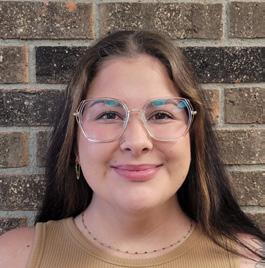






JAMESTOWN, N.D. • Interstate Engineering is excited to announce the addition of multiple team members to the organization, expanding services across the Great Plains Region. This includes hires from Horace, Jamestown, Mandan, and Wahpeton North Dakota; and Spearfish, South Dakota.
•Interstate Engineering welcomes Dave Kirkpatrick to the Horace, North Dakota, office as a GIS specialist. With a natural resources management degree from NDSU, Dave joins the team as a GIS professional. He specializes in GIS, specifically drawing water resources, floodplain mapping, web app building, and model building. His knowledge and drive to succeed will make him a valuable addition to the firm.
•Interstate Engineering announces the addition of Parker Ruzika as a project technician to the Horace office. Parker has a Bachelor of Science degree in construction management from NDSU. With a desire to continue learning and sharing knowledge, Parker’s expertise will undoubtedly be an asset to the Interstate Engineering team.
•Interstate Engineering expands its Horace team with the addition of Taylor Streyle. She graduated from Concordia College with a major in applied physics and a minor in mathematics. Her drive to succeed will make her a valuable addition to the firm.
•Interstate Engineering welcomes Dave Wiosna to the Horace office as a planning manager. He is a UND graduate with a master’s degree in geography. Dave specializes in community planning, transportation planning, and GIS.
His knowledge and drive to succeed will make him a valuable addition to the firm.
•Interstate Engineering expands its CADD team in Jamestown, North Dakota, with the addition of Taylor Brugh. She has an Associate of Science in pre-engineering and an Associate of Applied Science in architectural technology and design. She specializes in CADD drafting. Her knowledge and drive to succeed will make her a valuable addition to the firm.
•Interstate Engineering announces that Haley Boeder has joined the Mandan, North Dakota, office as a marketing coordinator. She graduated from the University of Mary with a Bachelor of Science in marketing. She specializes in social media marketing, graphic design, and website design. Her knowledge and drive to succeed will make her a valuable addition to the firm.
•Interstate Engineering announces that Trevor Anderson has joined the Wahpeton, North Dakota, office as a staff engineer. He graduated from North Dakota State University with a major in civil engineering. He is currently studying for his Fundamentals of Engineering (FE).
Interstate Engineering announces the addition of Kyle Carey as a project engineer to the Spearfish, South Dakota, office. Kyle attended the South Dakota School of Mines and Technology with a Bachelor of Science in civil engineering. He has been in this industry for eight years and specializes in construction and transportation. His knowledge and drive to succeed will make her a valuable addition to the firm.
PLYMOUTH, Minn. • Amy Denz was promoted to chief development officer at Moore Engineering, Inc. Based in the company’s Plymouth, Minnesota, office, Denz will drive revenue and
profit growth across all sectors and markets in the company. Denz has been with Moore Engineering for five years, most recently as the Environmental Sector Leader.


MINNEAPOLIS, Minn. • Enclave, a unified real estate investment firm, has appointed Mike Ernst as president of construction. A 30year industry veteran, Mike joins Enclave from Ryan Companies, where he held various leadership roles over his tenure, most recently serving as vice president of operations.
“Mike’s proven ability to deliver transformative outcomes and passion for people will further strengthen Enclave’s capabilities and support our strategic objectives as we expand our footprint and impact across key markets,” said Eric Christianson, chief operating officer. “We’re thrilled to add Mike’s innovative vision to our leadership team and look forward to a future of continued growth and new opportunity.”
In partnership with Enclave’s senior leadership team, Mike will apply his vast knowledge across architecture, engineering, and construction sectors and diverse project experience to drive value




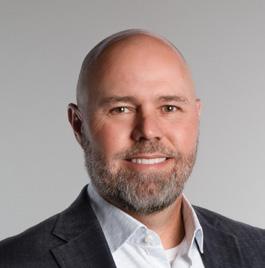
for partners and clients, focusing on revenue diversification, operational efficiency and talent development.
“The opportunity to join a growing organization like Enclave, whose commitment to excellence and community impact aligns with my own professional values, is incredibly exciting,” said Ernst. “I am eager to contribute to Enclave’s mission of building quality, sustainable developments that enhance communities and foster long-term value for all stakeholders.”
Recognized for their comprehensive approach to real estate investing, Enclave’s 360-degree business model encompasses development, construction, and property management. With a diverse portfolio of over 150 multifamily, industrial, commercial, and mixed-use projects spanning the Midwest and Mountain West, Enclave leverages its integrated platform to deliver exceptional results.
BISMARCK, N.D. • Tony Theurer joins Apex Engineering Group as a senior engineering technician with more than 30 years of experience. He specializes in construction and has extensive experience in roadways, grading projects, paving, structures, and underground utilities. Tony also served in the military for 29 years, spending the last 12 years as a Qualified Army Instructor teaching engineering courses at the Regional Training Institute.
BISMARCK, N.D. • Jenifer Bergstad joins Apex Engineering Group as a survey technician. Her prior survey experience includes interning for the NDDOT. Bergstad is pursuing an AAS degree in engineering technology from Bismarck State College. As a technician, she works with design and construction surveys and land boundaries.
BISMARCK, N.D. • Logan Fridgen started interning at Apex Engineering Group during the summer of 2023. Now that he has graduated from North Dakota State University with a degree in civil engineering, Fridgen joins Apex full-time. As a graduate engineer in the transportation group, he will assist with urban and rural roadway projects. His prior experience includes an internship with the Department of Transportation Support Center (DOTSC).
BISMARCK, N.D. • Carter Schoneberg joins Apex Engineering Group as a transportation group graduate engineer. He recently graduated from North Dakota State University with a degree in civil engineering. Carter started as an Apex intern in 2023 before joining the team full-time. He also interned with the Department of Transportation Support Center (DOTSC), where he assisted with the design of the plan development process for a variety of NDDOT projects. In his new role, Carter will assist the Bismark Transportation group with design and construction projects.


DICKINSON, N.D. • James Kramer joined JE Dunn Construction as a project engineer in 2022, focusing on sports, recreation, and public projects. Kramer has been promoted to client solutions representative. In this role, Kramer will be responsible for assisting to expand the JE Dunn brand across the state of North Dakota by building relationships with owners, architects and designers, and trade partners. His strengths include bringing people together to create shared common interests and understanding owner’s perspectives with regards to operations, maintenance, and staffing. James combines an eye for detail with the ability to see the big picture, enabling him to work seamlessly with all team members from different entities.
Kramer, the former executive director of Dickinson Parks and Recreation, has more than 30 years of business development experience working for government entities and serving as the owner’s representative on numerous public construction projects.
“As our North Dakota offices grow year over year, we’re thrilled to have James transition into this position,” said Marc Mellmer, JE Dunn senior vice president and office leader for Dickinson and Williston. “JE Dunn has always been a company that values its greatest resource, our people. And now that we have the ability to continue to grow and expand our North Dakota market presence, we can provide even greater value to our clients.”
Kramer is based in Dickinson, North Dakota, and will support projects across the state and beyond.





Whetheryou’rereadytojumpstartyourcareerwithatechnical degreeorexplorepathwayswithtransferoptions,weoffer hands-ontrainingwithconnectionsandaffordabletuitionthat getsyouthere.Withstudentclubs,organizationsandathletics atBismarckStateCollege,you’llnotonlygettheeducation youneed,you’llgetthewholecollegeexperience.
Tuitionatabout$5kperyearand over$1.3millioninscholarships
Bachelor’s,associateand stackablecertificateoptions
Hands-onlearning,internships andbusinesspartnerships


Human Resources Director
Alerus Grand Forks, N.D.
This month we asked: How does your organization foster innovation and a growth mindset?
The entrepreneurial spirit is deeply engrained in our culture and core values at Alerus, which fosters a mindset that focuses on continuous innovation, embracing new ideas, and striving to be the best you can be, every day.
One of our core values, “success is never final,” perfectly reflects our dedication for constant growth and innovation. This core value encourages employees to embrace opportunities to challenge how we do things and accept change to remain relevant within our industry and with our clients. Our “passion for excellence” and “do the right thing” core values ensure that our long history of integrity and commitment to quality remain top priorities as we encourage growth and innovation.
Alerus has always been a collaborative company that equally respects and values each employee’s individual contributions. Team members feel empowered to make decisions that impact their role and our company. They are encouraged to pursue individual growth, and we support them with continuous education opportunities, leadership talks, and other development resources. We also encourage everyone to share their perspectives whenever they have an idea or feedback. We believe a great idea can come from anywhere, that everyone has something to contribute, and when we work together, everyone benefits. Our “One Alerus” core value reflects our collaborative nature, which encourages continuous improvements and growth to provide the best service possible for clients.
At Gate City Bank, everything we do revolves around creating a better way of life for customers, communities and team members. By embracing this core purpose, we continually build our legacy of innovation, servant leadership, community giving, empowerment and fun. I mention “innovation” first here for good reason – it’s a key that unlocks endless opportunities.
When it comes to fostering a culture innovation, Gate City Bank truly walks the walk. For starters, each action we take is shaped by our Principles of High Standards, one of which is “Embrace Data and Innovation” – a mindset engrained in our team members from day one. I’m honored and thankful for the privilege to present at each team member orientation session, to help ignite a passion for innovation with each newcomer.
I’m also proud to say that Gate City Bank provides ongoing support to help our team members grow, both personally and professionally. Whether it’s educational courses, state-of-the-art product and service training or leadership development, we believe in elevating various life experiences and worldviews to expand innovation at every turn. And in addition to delivering the best products and services, we focus heavily on community giveback outside of work, which has proven crucial to spurring innovation and growth.
At the end of the day, Gate City Bank’s team members thrive on collaboration, which propels us forward. They pursue progress through engagement scores, case studies, success stories and more, cultivating a spirit of innovation and growth in the process – For a Better Way of Life.®



Jessica Ebeling
Executive Vice President of Innovation, Digital Solutions & Payments
Gate City Bank Fargo, N.D.
Moore Holding Company and its affiliated companies foster innovation and a growth mindset to best serve our clients and communities by constantly striving toward best-in-class performance. As an employee-owned enterprise, we are also invested in continuous improvement because our company’s growth and successes translate into positive outcomes for all. We act like owners because we are owners, always seeking new and improved ways to perform as individuals and as an enterprise. Our efforts have yielded novel client solutions, convenient systems, streamlined processes, and more efficient workflows.
Our enterprise is also guided by an appetite for growth to generate new opportunities for our team and to positively impact the health and success of the communities we serve. This mindset drives our team to set and achieve new standards and expectations. To achieve our goals and build the future we seek, every one of us must be on a continuous growth track. We nurture this in each employee through quarterly and annual goals aligned to our organizational short- and long-term strategy. Through our strategy and goal setting processes we create a structure where each individual recognizes the opportunity and obligation of being a part of our team and to always know, “What’s next?”
Accountability as a value undergirds our thinking. Employee ownership inherently fosters accountability, so we support that instinct through frequent check-ins and assessment. It is an agile process that stimulates progress because goals are identified, completed, and reviewed; then, the process renews.
Finally, strategy for us is an iterative goal construct, and managerial diligence fosters the energy and drive our employees naturally possess to create a culture where everyone has agency to do their part to serve our clients and help us innovate and grow.

Jim Tyler CEO EAPC Architects Engineers Bismarck, N.D.

At EAPC Architects Engineers, our commitment to fostering innovation and a growth mindset is deeply embedded within our culture. With a 57-year history spanning 10 offices, our nearly 200 employees exemplify our dedication to excellence in the AE industry.
Our Emerging Professionals group plays a pivotal role in this philosophy. This dynamic team spearheads innovative initiatives, enriches our company culture, and propels our business development. Their work organizing insightful presentations and collaborating across departments is vital in advancing our business strategies.
We prioritize supporting our team members’ personal and professional growth. We equip our employees with essential resources for their career advancement through initiatives like our scholarship program and licensure support. Our intern program has shown remarkable success. Two years ago, we hosted nine summer interns. By Christmas, we extended offers to all, and all nine accepted and started their full-time positions this past May, illustrating the success of this approach.
Equally important is our commitment to community engagement. As responsible corporate citizens, we actively participate in various community service activities, including volunteering, sponsorship, and local initiatives. This not only strengthens our ties with the communities where we operate but also enhances their well-being.
At EAPC, we see our employees as family, fostering a culture where mutual support, respect, and collaboration are paramount for continuous growth and innovation. This holistic approach ensures that while we advance as a company, we also contribute positively to the development of our employees and future generations.

Total nonfarm payroll employment increased by 272,000 in May, and the unemployment rate changed little at 4%, the U.S. Bureau of Labor Statistics reported. Employment continued to trend up in several industries, led by health care; government; leisure and hospitality; and professional, scientific, and technical services. Among the major worker groups, the unemployment rates for adult men (3.8%), adult women (3.4%), teenagers (12.3%), Whites (3.5%), Blacks (6.1%), Asians (3.1%), and Hispanics (5%) showed little or no change in May.
EMPLOYMENT AND AVERAGE HOURLY EARNINGS BY INDUSTRY FOR ALL EMPLOYEES, MAY 2024, SEASONALLY ADJUSTED
EMPLOYMENT BY INDUSTRY, MONTHLY CHANGES, WITH CONFIDENCE INTERVALS, 1-MONTH NET CHANGE
Total nonfarm payroll employment increased by 272,000 in May, higher than the average monthly gain of 232,000 over the prior 12 months. In May, employment continued to trend up in several industries, led by health care; government; leisure and hospitality; and professional, scientific, and technical services. Health care added 68,000 jobs in May, in line with the average monthly gain of 64,000 over the prior 12 months. Government employment continued to trend up in May (+43,000), in line with the average monthly growth over the prior 12 months. Employment in leisure and hospitality continued to trend up in May (+42,000), similar to the average monthly gain over the prior 12 months (+35,000). Professional, scientific, and technical services added 32,000 jobs in May, higher than the average monthly gain of 19,000 over the prior 12 months.
Source:


















